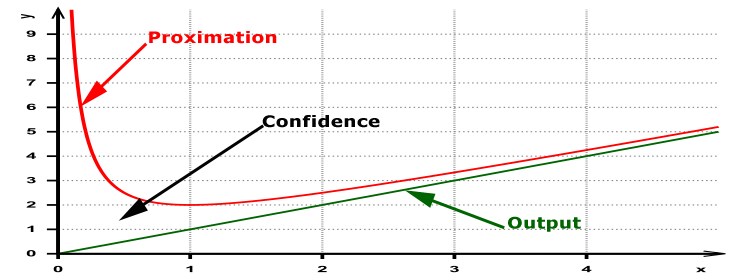
In the world of big data, the abundance of information, complex systems and the need to use good judgement to make sound decisions, many people, often overwhelmed by too many variables, default to single moments of truth, black and white solutions, and the promise of the ‘right’ answer in an attempt to solve the challenges they face.
It’s understandable that we want simple answers. Our brains love ‘simple’ because it is energy efficient and comforting. Once we have ‘the answer’ we don’t have to think, we can just do.
Looking for ‘simple’ in business is at best lazy and, at worst, very risky for long term success and sustainability.
We think that finding the exact answers will give us certainty in our decision making and make life ‘easier’ for us all; however, in a world of variables, especially when it comes to designing a sales strategy, we must accept that there is no perfectly defined answer and we must be prepared to live with approximations and review regularly so as to make the required adjustments.
Sales strategy (indeed any strategy) is not a purely scientific process. If anything, it is a creative construct, based more on logic and experience, knowledge and determination than the use of mathematical formulae. In addition, the immediacy with which sales activities have to be initiated and results achieved, often makes it unwise to spend too much time trying to gather answers that are 100% precise. This is particularly true when one realises that the cost of gathering totally accurate data (in terms of both dollar spend and invested time, relative to ROI) is disproportionate i.e. it is a generally accepted principle that as much as 80% of the information needed, usually with a margin of error of less than 10% is usually readily available.
Too often, the stretch from 80% to 100% is just too time-consuming, too costly and seldom warrants the expense.
The way to bridge the gap between absolutely validated data and the urgency of sales activities is through the use of a process known as “Progressive Approximation” i.e. progressing to a conclusion through a series of rough calculations and estimates based on personal and domain expertise, coupled with easily obtained, important information.
When Progressive Approximation is applied effectively it forms the foundation for an effective debate on the most appropriate course of action – defining imperative, developing sales strategy, segment markets, etc.
How to Use Progressive Approximation
Progressive Approximation is a process of determining what strategic decisions an organisation needs to make and then continually synthesising available and sourced data until a focal point is achieved, where everyone involved in the process is satisfied with the level of confidence of the decision.
Progressive Approximation is used to develop the sales strategy for a company, its regions, branches and eventually, the salespeople’s territory plans.
Using Progressive Approximation to develop a sales strategy, a company is able to quickly come up with a “best initial answer”. This indication is usually sufficient to help decide whether it is worth the time and effort to improve the validity of the data (by gathering more information or conducting a more in-depth analysis).
One of the best ways to start this process is by asking the sales leaders in their respective regions/states to provide current data on current sales activities and results along with their observations and estimations on what they see happening by way of trends, market movements, customer behaviours, etc. in their respective market places. This information is then brought to a national sales strategy session and shared across the group.
By considering this data, issues and opportunities relative to the organisation’s overall sales goals and effectiveness the sales leadership group will be in a position to define what is best practice for the organisation nationally and by each region/state. Progressive Approximation is used to synthesise all of the opinions and data. In this way the sales strategy is: a) bottom-up developed and, b) top-down driven and highly focused, taking cognisance of issues, factors and conditions pertinent to sales in each region, rather than attempting to develop a sales strategy on the basis of “one-size-fits-all”.
Remember everybody lives by selling something.
Author: Sue Barrett, www.barrett.com.au


New Article Email Notification